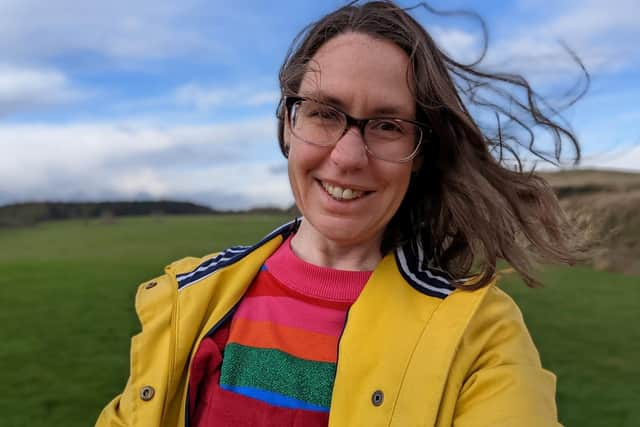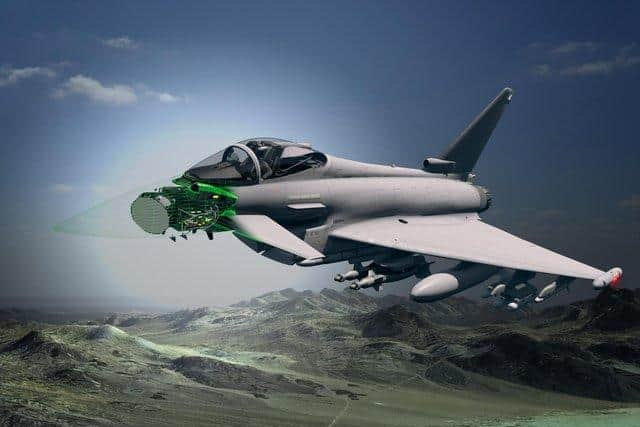Edinburgh-based Heather Dalgarno engineers the right design for life
The ECRS Mk2 radar is at the cutting edge of advanced radar technology and is being designed and built by engineers working at the Leonardo site based at Crewe Toll in Edinburgh. The tech is set to be integrated into the UK’s RAF Typhoon fleet that protects British airspace from its Quick Reaction Alert base at RAF Lossiemouth in Moray..
As a mother of two young children, Heather believes ‘custom working’ at Leonardo has supported her in progressing her career through challenging times, culminating in promotion to her current role as Project Engineering Manager for Systems and Software on ECRS Mk2.
Advertisement
Hide AdAdvertisement
Hide Ad‘Custom Working’ was introduced in response to the changes brought about by the pandemic. It allows people to balance their working life with their responsibilities at home. It has enabled Heather to decide how she prefers to split her time between attending the site and working from home, to structure her working day.


Having this freedom proved to be pivotal in giving Heather the space she needed to manage a cluster of challenges that all arrived at the same time just before the first lockdown in 2020.
She said: “I came back from maternity leave five days before the first lockdown and was returning to a brand new job, with a new team, new boss, and a totally different technical area. This was the second time I had come back from maternity leave at Leonardo and so I knew how very difficult an emotional and intellectual journey that is in normal conditions. To do that in lockdown was extremely challenging – we are used to it now, but in the first lockdown everything felt like it was up in the air. I had no access to childcare or support from family members. My son was 4 years old and my daughter was just 10 months, so suddenly I find myself caring for two very small children, with no childcare, and a brand new job in lockdown, all on top of the anxiety we were all experiencing in the emerging pandemic. It was a lot to handle.”


With the full backing of her employers, Heather is able to juggle childcare with her partner, where they could effectively operate a shift system.
She said: “My partner worked from 6am till 12pm and I worked 12pm to 6pm, then we would do additional hours once the kids were in bed. It was exhausting to be up by 5am, do 6 hours of childcare, then 6 hours work, but we had the flexibility to work from home so were able to achieve our individual work objectives whilst sharing the responsibilities in a way that worked for our family.”
But the autonomy given to employees doesn’t stop at their physical working arrangements, they are actively empowered to take the initiative.
Heather said: "Since returning from maternity leave in lockdown I’ve progressed from working in a small team to now being responsible for a large team and I like the large scale of the programme and my role within it because I am a ‘big picture’ person, and I love working with people.
"I want everyone in my team to feel encouraged, empowered and supported to make improvements, and to find their own ways of working that suit them. I am a keen advocate of ‘intent based leadership’ where the fundamental idea is that you understand what your people are capable of and then ask them to use their knowledge to find a solution and state their intent, rather than telling them what to do. I think you can motivate and unlock people’s potential this way, by showing that you believe in their abilities and giving them the freedom to use them.”
A message from the Editor:
Thank you for reading this article. We're more reliant on your support than ever as the shift in consumer habits brought about by coronavirus impacts our advertisers.
If you haven't already, please consider supporting our trusted, fact-checked journalism by taking out a digital subscription.
Comments
Want to join the conversation? Please or to comment on this article.